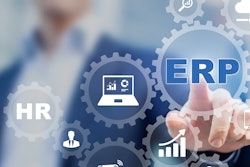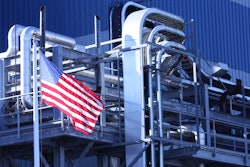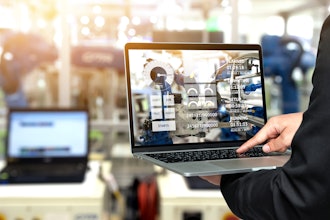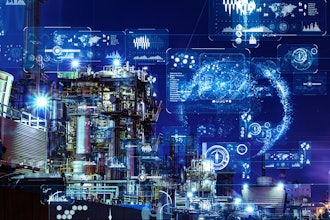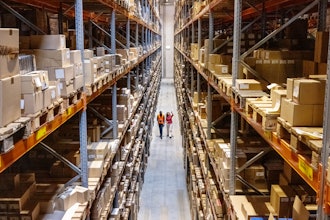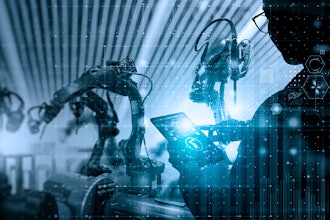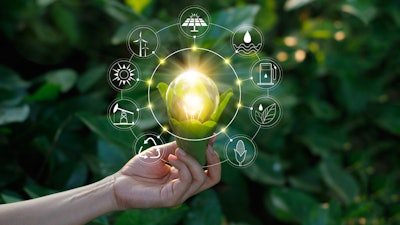
With a raging pandemic, disrupted supply chains, climate change, political instabilities, and a growing scarcity of raw materials, 2021 will no doubt present a number of serious challenges to the global manufacturing industry. Paradoxically, however, I believe the trials and tribulations of 2020 have given many organizations a moment of clarity.
Having kept my fingers on the pulse of the industry throughout 2020, I see a renewed resolve among manufacturers to focus on sustainability and join the circular economy. Many manufacturers are starting to rethink how they design and produce their products with as little waste as possible, how they ship them and, crucially, how they approach the rapidly growing after-market repair and recycling market.
Besides the obvious benefit of reducing their strain on the environment, there are some major business benefits for manufacturing companies taking a circular approach: improved efficiency, greater public appeal, more attractive to shareholders and investors, better employee retention, and reduced risk of losing market share to fast-moving challengers.
I have isolated three main topics that I believe will have a profound impact on the manufacturing space in 2021 and beyond.
Processes and Factories Transform
The circular economy is putting pressure on companies to reexamine their business processes; not only to improve quality and profitability, but because an efficient supply chain consumes less energy, uses fewer resources, and produces less waste. In short, gearing production toward sustainability is just good business for manufacturers.
One example is DyeCoo, a textile company that has partnerships with Nike and IKEA, has developed a water-free process for dyeing. Using highly pressurized, recyclable carbon dioxide instead of water, the company can produce its product in half the time, using a fraction of the energy of traditional methods, without straining water resources.
Beyond processes, an increasing number of environmentally aware manufacturers are looking at their plants and fixed assets to find ways of creating closed-loop operations. One example is Cambrian Innovation. This U.S. company treats wastewater contaminated by industrial processes, not only turning it into clean water, but even producing biogas that can be used to generate clean energy.
I believe that in 2021, we will see a major acceleration among manufacturing companies to find new or reinvent existing processes that will help them adapt their business to the circular economy. This transformation will create ripple effects well beyond the manufacturing sector: consumers and the environment stand to benefit from more efficiently-produced goods, while enterprise technology vendors will have to rise to the challenge of creating business software that can handle a circular business model.
Designing and Developing Circular Products
The drive toward circular plants and processes is only half of the battle. Manufacturing companies will also need to re-engineer, and in some cases reimagine, their products. What I am referring to here is not merely the process of servitization, i.e. selling product outcomes rather than the product itself, but the transformation of linear products into circular ones.
Manufacturers are realizing that adopting a servitized business model means that they must build products that will last. In the old, linear economy, manufacturers would plan obsolescence into their products to capitalize on spare parts and the after-service market. Today, manufacturers are moving to a circular economy, which means building for longevity.
Another key trait of circular products, which receive increasing focus in 2021 and beyond, is repairability. It is no longer feasible for electronics manufacturers, for example, to force customers to discard fully functioning products simply because one component needs to be upgraded. Manufacturers are already starting to take serviceability into account in the design phase.
One example of this accelerating trend is Dell and its Latitude laptop computers, which have been designed with recycling in mind. Using things like removable batteries, standardized fasteners, and by eliminating mercury and adhesives, Dell is able to produce laptops that are more than 97 percent recyclable. For manufacturers, the business case for designing and manufacturing for recycling is a solid one: If a company can reclaim old products and easily recycle some or all raw materials, they will be able to massively reduce its costs.
I believe that 2021 will be the year when the three over-arching trends in product development discussed above—designing for repair, recycling, and longevity—will decisively come to the fore as primary factors for decision-making among manufacturers. Those companies who still consider these trends as mostly placative ‘window dressing’ will put themselves at risk of being spun out of the circular economy.
Remanufacturing
The themes discussed so far all coincide in an area where I foresee explosive growth in the coming one to three years: remanufacturing.
As one of the linchpins of the circular economy, remanufacturing is attracting attention both from new, fast-moving entrants and well-established incumbents. According to OPI, the U.S. spends an estimated $47 billion a year on remanufacturing. Yet despite this dollar figure being far from trivial, it only represents 0.4 percent of GDP, compared to 10 percent for new product manufacturing—which indicates a huge potential for growth.
To capitalize on recycled and upcycled products, manufacturers need to establish a service-led organization. After all, if companies want to transform a ‘pre-loved’ product into a new one, they will need to ensure traceability. This means accessing information on what the customer was sold in the first place, what components went into the original product, and, based on age and state, what are the product’s likely points of failure. Assuming that data has been captured and is readily available, remanufacturers are in an excellent position to strip the product and replace components with recycled, non-virgin materials.
As the driving force behind remanufacturing, recycling will play an increasingly vital part in the circular economy. The area of recycling is facing increasingly strict legislation in 2021 and beyond. In the food and beverage space, there is already a broad movement away from single-use plastics, with companies like Walmart encouraging customers to bring plastic bags and films to their in-store recycling drop boxes. Another example is Kellogg's, who have eliminated single-use plastics spoons since 2018 and are now looking to reduce the thickness of their bag-in-box retail cereal packages by 17 percent.
I believe that the pandemic of 2020 has driven a new sense of urgency in the manufacturing industry when it comes to sustainability and the circular economy. In 2021, I predict that this new awareness will lead to a never-before-seen acceleration of activities in the areas of process and plant efficiency, recycling, and remanufacturing.
Colin Elkins is IFS’s Vice President of manufacturing industries and has over 25 years’ experience in ERP software solutions for the sector.





